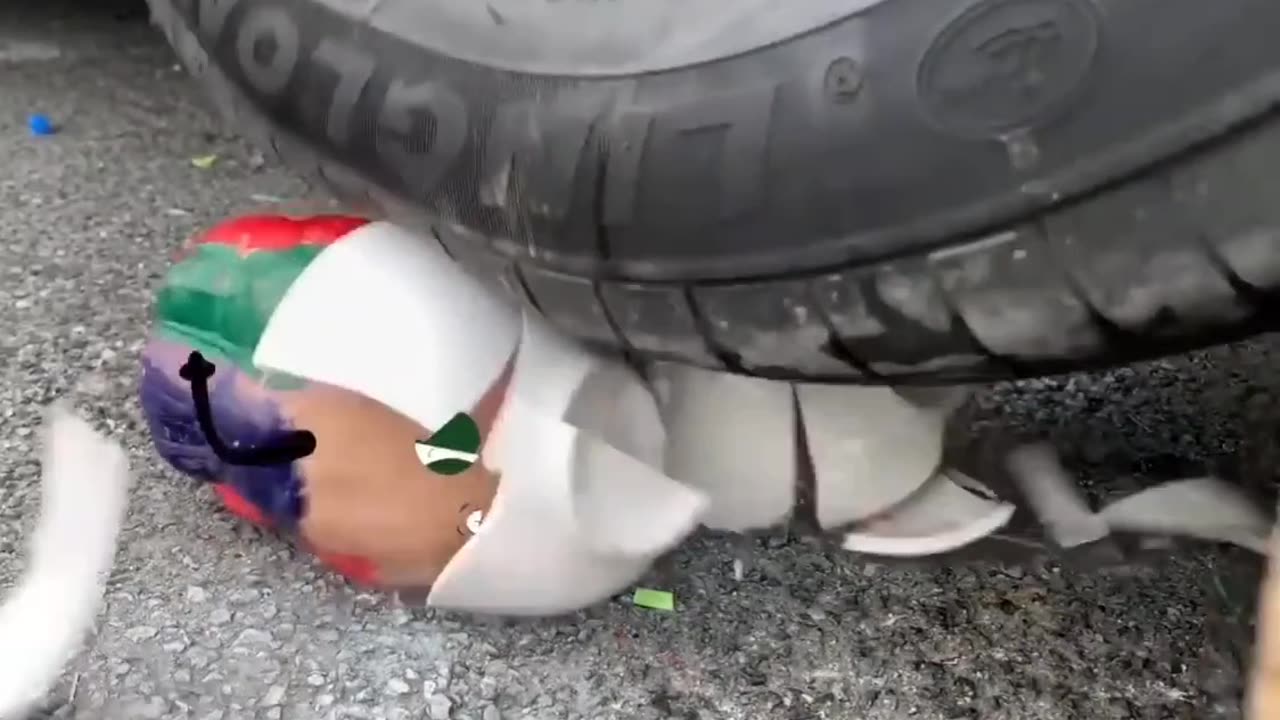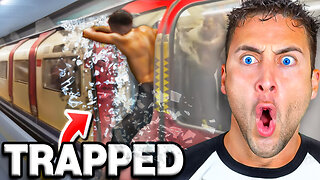Premium Only Content

car and funny test comic
When various items are crushed under car tires, several factors come into play that determine the outcome. These factors include the weight of the car, the type of tire, the surface on which the crushing occurs, and the nature of the items being crushed. Here’s what typically happens to different types of items:
1. Soft Items (e.g., fruits, bread)
Outcome: These items generally get squashed or flattened.
Details: The car's weight forces the soft materials to spread out, often resulting in a messy splatter. The tire treads might get coated with the remains of the soft items.
2. Hard Items (e.g., nuts, small electronics)
Outcome: Hard items may break, crack, or shatter.
Details: Depending on the item's brittleness, it could either fracture into pieces or withstand the pressure with minimal damage. Small electronics might have their casings cracked, and internal components could be damaged.
3. Rigid Items (e.g., metal objects, hard plastics)
Outcome: These items might deform, bend, or get scratched.
Details: Metal objects might get bent or slightly crushed, while hard plastics could crack or snap, depending on their thickness and material properties.
4. Liquids in Containers (e.g., soda cans, water bottles)
Outcome: Containers may burst or leak.
Details: Plastic bottles typically deform and might leak, whereas cans often burst, creating a spray of liquid. The pressure inside the containers combined with the car's weight causes them to fail at their weakest points.
5. Fragile Items (e.g., glass bottles, ceramic items)
Outcome: These items shatter into pieces.
Details: Fragile items can't withstand the heavy pressure and break into many sharp fragments. This can be dangerous and create a hazardous mess.
6. Elastic Items (e.g., rubber balls, foam materials)
Outcome: These items compress and may bounce back to some extent.
Details: Elastic items like rubber balls will be squished and may return to their original shape once the pressure is released, depending on their elasticity.
7. Organic Items (e.g., vegetables, meat)
Outcome: Organic items are crushed and flattened, with possible fluid release.
Details: Vegetables and meat are compressed, often resulting in a release of juices and a flattened shape. This can be quite messy.
8. Paper and Cardboard (e.g., books, boxes)
Outcome: These items flatten and may tear.
Details: Paper and cardboard crush easily under weight, leading to flattening, tearing, and possible crumpling. The contents inside cardboard boxes, if any, can affect the outcome based on their nature.
9. Synthetic Items (e.g., plastic toys, nylon)
Outcome: These items may crush, deform, or break.
Details: The outcome depends on the type of plastic and its thickness. Thin plastics may crack, while more elastic types may just deform.
General Observations
Sound: Crushing hard or fragile items often produces noticeable sounds, such as cracking or shattering.
Visual: There is typically a noticeable change in the shape and integrity of the items.
Safety: Crushed glass or hard plastics can create sharp pieces, posing safety risks.
Clean-Up: Soft, organic, and liquid items can create significant messes, requiring thorough cleaning.
The exact result varies with each specific item, but the common theme is that the immense pressure from a car tire can significantly alter or destroy the structure of most objects placed under it.
-
 4:26:28
4:26:28
Flex011
5 hours ago $0.16 earnedCronos: The New Dawn – Brutal Time-Travel Horror Survival
3.47K2 -
 33:11
33:11
The Finance Hub
17 hours ago $1.65 earnedBREAKING: JD VANCE JUST RELEASED A MASSIVE BOMBSHELL!!! OMG!!
7.97K21 -
 18:06
18:06
Professor Gerdes Explains 🇺🇦
15 hours agoAfter Major Attack, Trump Vows "Phase II" Sanctions on Russia
8.56K8 -
 5:24:59
5:24:59
EVASIVE_rabbi
5 hours ago✅️ 2 Dumb Navy Vets & A First Playthrough #Coop ✅️
4.28K1 -

Cook14u
9 hours agoSeahawks Let Me Down, DO NOT Talk About How I Look 🤐🙃🥴
2.76K -
 8:18
8:18
MattMorseTV
16 hours ago $9.72 earned2.2 MILLION in ONE YEAR.
69.5K145 -
 LIVE
LIVE
TheKappaConvict
3 hours agoRainbow Six Siege X Lets send Em Packing Boys | The kappa Convict
15 watching -
 1:05:18
1:05:18
Steve-O's Wild Ride! Podcast
3 days ago $7.17 earnedYUNGBLUD Stands Up For His Generation | Wild Ride #265
70.1K14 -
 12:11
12:11
Nikko Ortiz
2 days agoCrashout 6 Rumble
96.2K9 -
 19:56
19:56
GritsGG
16 hours agoSpectating Random Solo Players in a Bot Lobby!
13.3K1